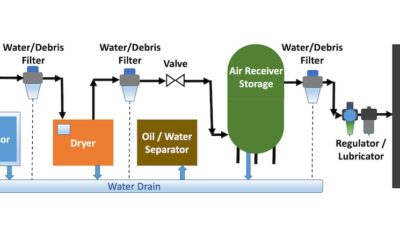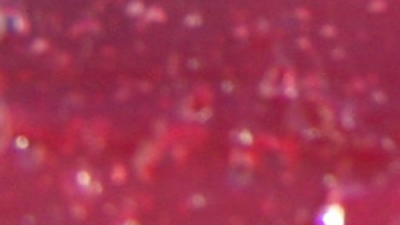Machines require rotating shaft seals to retain lubricants and prevent foreign particles from entering sealed cavities, which damage machinery and lead to premature failure.
Machines require rotating shaft seals to retain lubricants and prevent foreign particles from entering sealed cavities, which damage machinery and lead to premature failure. Application conditions can vary considerably, and many seal designs have evolved to satisfy these conditions. Some applications tolerate a small amount of leakage, while others cannot allow any leakage. In general, seal complexity and cost increase as the need for zero leakage increases.
Shaft seals make up two groups: contacting and noncontacting. Contacting seals make direct contact between the sealing component and the rotating shaft. Because there is rubbing contact, leakage is minimal and friction and seal wear occur.
The sealing element in noncontacting seals allows a certain amount of leakage. It is controlled by clearance gaps. Because there is no rubbing contact, leakage is higher, but seal friction and wear are eliminated.
Contacting
There are three types of contacting seals.
Mechanical face seals prevent leakage in applications that exceed the capabilities of elastomeric radial lip and packing designs. They provide long life without shaft wear. Shaft finish, hardness, and material are not critical. The seal can handle a wide variety of fluids, pressures up to 3000 psi, speeds to 50,000 rpm, and temperatures from -425-1200 F. This type of seal has become popular on pumps where leakage is not allowed.
Radial lip seals are primarily used to retain lubricants and exclude contaminants. The seals function at temperatures from 60-400 F. Advantages include low cost, small space requirements, and simple installation.
Packings are not designed to produce a leak-free seal. They are tightened enough to allow a minimum, but positive, leakage. The leakage is intended to lubricate the packing material. The modest leakage reduces friction and wear. Packing material is supplied in many shapes, including impregnated yarn, continuous strands, square-sections, and interlocking shapes. This seal is generally used on pumps.
Noncontacting
Four types of noncontacting seals are available.
Bushing seals are classified as fixed, floating, balanced, and floating ring. The bushing seal is a close-clearance version arranged stationary to the housing or floating with the shaft. The fixed bushing is a sleeve attached to a housing, surrounding a rotating shaft with a relatively close clearance.
Floating bushing seals follow shaft gyrations and have closer tolerances than fixed bushings. Balanced bushing seals eliminate or reduce spring forces and still retain the advantages of a floating bushing seal. Floating ring seals overcome the pressure and alignment problems of single floating bushings by splitting the bushing into several rings. This seal is only suited for sealing liquids.
Labyrinth seals are used mainly in high-speed applications where relatively high leakage rates can be tolerated and simplicity is necessary. A properly designed seal does not require lubrication or maintenance. If wear occurs, the only damage is an increase in leakage.
Visco seals have grooves or screw threads machined on the shaft or in the housing to provide a positive pumping action. Viscosity of the pumped fluid in the clearance gap produces the seal effect. These seals function at certain minimal speeds. For low shaft rotation, a secondary-sealing device, such as a lip seal, must be provided. This type of seal is used where liquids are continuously transferred.
Magnetic seals use a colloidal suspension of magnetic particles, focused by permanent magnets, to create a seal. In addition to providing a nearly perfect seal with negligible wear or friction, they are tolerant of shaft runout. They can be used at speeds up to 120,000 rpm, temperatures up to 400 F, and pressures of 7 psi/stage. Seals are used primarily with gases and exclude moisture, mist, and fine solids.
&HEADLINE>Rotating shaft seals&/HEADLINE>
&BYLINE>Joseph L. Foszcz&/BYLINE>
&TEXT>
Contacting seals
Mechanical face
Radial lip
Packing
Noncontacting seals
Bushing
Labyrinth
Visco
Magnetic
Troubleshooting mechanical face seals
SymptomCauseCure
Narrow wear pattern
Excessive pressure
Reduce pressure or change to higher pressure-rated seal
Wide wear pattern
Cocked stationary face Pump or pipe misalignment Pump cavitation or vibration
Clean and reassemble seal Realign pump Check system piping
No wear pattern
Rotary seal interference
Disassemble and remove obstruction
Intermittent wear pattern
Distortion of stationary face
Check stuffing box face for flatness Tighten gland bolts evenly Check seal faces for flatness
Uneven wear pattern
Pump/motor misalignment
Realign pump and motor
Heat checking
Seal faces overheat
Add flushing to seal faces Change seal design or material
Cracked hard face
Thermal or mechanical shock
Change seal material Handle seals with care
Chipped edges
Fluid vaporization Pump cavitation
Properly flush seal Check system piping
Flaking and peeling
Defective coating Chemical attack
Switch to solid seal material Change seal material
Deep wear on hard face
Fluid is abrasive or crystallizes
Flush to remove abrasive products Add heat to inhibit crystallizing
Troubleshooting radial lip seals
SymptomCauseCure
Leakage
Nicks, cuts, or tears in seal lip
Remove burrs and sharp edges from shaft Use mounting tool to protect seal lip from keyways, sharp shoulders, and splines Handle with care
Scratches or nicks on shaft surface
Finish shaft to 20 (omega)in. rms Protect shaft after finishing
Lead marks on shaft
Plunge grind shaft surface
Shaft whip or runout
Locate seal close to bearing
Cocked shaft
Use correct mounting tool and procedure
Damaged spring
Use correct mounting tool and procedure Handle seals with care
Damaged case
Use correct mounting tool and procedure Handle seals with care
Paint on shaft or seal
Mask seal and shaft before painting
Turned under lip
Rough chamfer
Machine chamfer to 32 min. and blend into shaft surface
Chamfer angle
Check for correct lead angle
Careless handling
Use correct mounting tool and procedure
Excessive lip wear
Pressure
Provide vents in housing
Rough shaft
Finish shaft to 20 (omega)in. rms
Dry running
Provide proper lubrication for seal
Element hardening or cracking
Temperature
Reduce sump temperature Upgrade seal material Provide proper lubrication for seal
Shaft wear
Abrasives
Use dust lip in dirty atmospheres Harden shaft to Rc 30 minimum Change oil frequently to remove dirt Install wear sleeve
Troubleshooting packings
SymptomPossible causes/actions
No leakage
Incorrect installation- negative stuffing box pressure requiring lantern ring Slight overtightening- follow installation procedure
Excessive leakage
Wrong packing Incorrect installation procedure Shaft runout excessive
Packing reduced under horizontal shaft
Shaft misaligned with stuffing box Worn bearings- packing acting as bearing
Packing reduced over horizontal shaft
Shaft misaligned with stuffing box Worn bearings
Whole or part of end ring missing
Excessive clearance between shaft and stuffing box neck or gland follower, allowing extrusion
Wear on outside of one or more rings
Rings rotating with shaft, packing section too small
Rings next to gland follower worn, others all right
Incorrect installation procedure, gland follower overtightened
Ring IDs burnt, dried, or charred, remaining material all right
Incorrect packing selection for temperature or speed Inadequate lubrication
Innermost ring deteriorated
Incorrect packing selection, check compatibility with product
Packing seizure on shaft after shutdown
Product crystallizing or solidifying in packing bore through inadequate lubrication or lack of cooling or heating
Troubleshooting noncontacting seals
ProblemCausesCorrective action
Excessive leakage at startup
Excessive radial clearance
Decrease radial clearance
Excessive pressure
Improve or add vent
Excessive lubricant fill
Decrease fill or increase cavity
Excessive temperature
Decrease fill or increase cavity
Excessive vibration
Increase lube cavity
Excessive end play
Increase lube cavity
Radial contact
Fill scratches and voids
Bypass leakage
Replace damaged secondary seals
Excessive leakage after a period of time
Loss of lubricant viscosity
Improve lubricant
Excessive relubrication
Decrease lubrication
Contaminant ingress
Add contaminant shield
Loss of magnetic fluid
Replace magnetic fluid
Water ingress
Static leakage
Add static seal
Partial vacuum
Clean or add vent
No lube leakage
Increase lube fill
Excessive wet environment
Add water shield
Dirt ingress
Excessive radial clearance
Decrease radial clearance
Excessive dirty environment
Add dirt seal
Partial vacuum
Clean or add vent
No lube leakage
Increase lube fill



